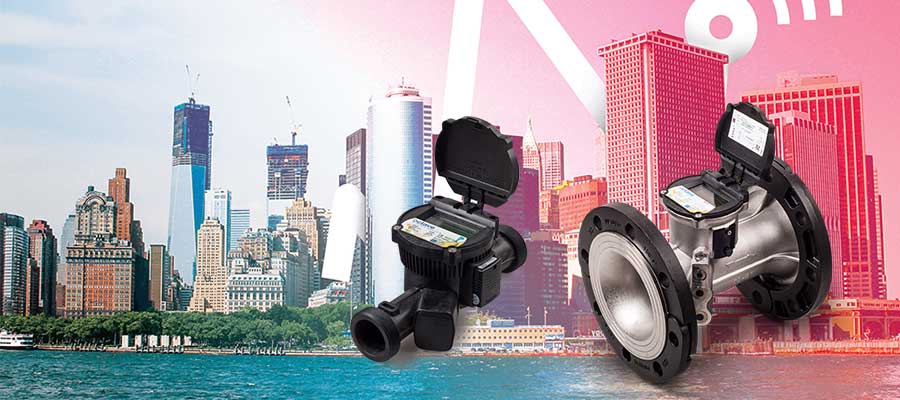
Arad’s water meters are made from stainless steel or polymer. In this blog post we explain what stainless steel and polymer are and why they are the optimal materials for manufacturing the best water meters available in the market today.
Stainless Steel
Stainless steel, or Inox Steel, is an alloy that contains iron and between 10.5 to 30 percent of chromium. Carbon, nickel, copper, nitrogen, sulfur, phosphorous, aluminum, titanium, molybdenum and selenium are also added in varying proportions to enhance anti-oxidation properties as well as achieve other special characteristics. As the name Inox suggests, stainless steel does not oxidize and will stay rust-free in almost all conditions.
Stainless steel manufacturing starts by melting the metals in an oxygen furnace. In order to lower the carbon content, the liquid metal is then refined in another vessel and injected with oxygen and argon.
There are more than one hundred grades of stainless steel that are classified into five different groups: austenitic, ferritic, martensitic, duplex, and precipitation hardening. The most common type of stainless steel is grade 304 or 18/8, i.e., 18 percent chromium and 8 percent nickel. The 304 grade is a hardened non-magnetic steel, making it desirable for most industrial applications. Other grades, such as the alloys used to make cutlery, are softer and more malleable. [1]
Our stainless-steel Octave water meter shown above is made from grade 316 stainless steel. More expensive than the 304 grade, it has higher nickel and molybdenum content for better corrosion resistance and is especially resilient against chlorinated liquids. [2]
Polymers
Most people think of a polymer as a synonym for plastic. While plastic is a polymer, polymers are a one-, two- or three-dimensional man-made or natural chemical comprised of repeating units called monomers. A monomer is any chemical molecule that has the ability to repeat itself in a process called polymerization. For example, amino acids are monomers that polymerize into proteins. Our DNA and RNA are other examples of natural polymers, as are silk, animal horns, and latex from a rubber tree.
The first synthetic polymer plastic was Bakelite, which was invented in 1909 for manufacturing telephones. The first polymer synthetic fiber was Rayon, which was introduced in 1910. Twenty-five years later Nylon was invented as a substitute for natural silk. Plastic bottles or cups are made from thermoplastic polymers — man-made one-dimensional chains that can be melted, molded and remolded. Most man-made polymers are thermoplastic and products made from them can be recycled.
The polymer version of our Octave Smart Water Meter uses a thermoset polymer that cannot be melted down and reused. While every polymer has its own special properties, the reasons why thermoset polymers are the best choice for our water meters are:
- They are very resistant to chemicals.
- They are excellent thermal and electrical insulators.
- Light in weight, they provide a very strong packaging for sensitive mechanisms.
- They can be manufactured in an endless variety of colors and thicknesses [3]
Final Note
For heavy-duty water metering applications such as production plants and industrial processes, Arad water meters are available in the very best stainless steel alloy. With a long lifetime of accurate recording, a battery guaranteed for 15 years, no moving parts, and no maintenance required, our customers know that their water metering needs will be met no matter what the environmental and water challenges.
For municipal district needs, apartment buildings, single unit homes, and small neighborhoods, there is no better water metering solution than Arad’s polymer-cased smart water meter. Lightweight but tough in the field, our polymer meters can be counted on to provide many years of maintenance-free water metering.
Arad, the right material for the right job.
References
[1] John P Rafferty, Stainless Steel Metallurgy, 2019
[2] Reshift Media, Differences between 304 and 316 Stainless Steel, March 22, 2018
[3] American Chemistry Council, The Basics: Polymer Definition and Properties 2019